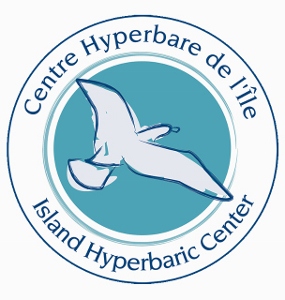Mild Hyperbaric Chambers
For those of you that know me, you know that I have been very vocal on the subject of mild chambers. As I have watched this sector of hyperbaric therapy over the last ten years, there have been a lot of changes; changes is quality control in the production of these devices, changes in the way that materials are bonded together. These units are demonstrating to be a viable option for hyperbaric therapy in certain patient populations. Key studies in cerebral palsy, autism, down’s syndrome and the silent injuries of war using slightly pressurized air have consistently provided reproducible benefits to those treated. The continued reluctance of the UHMS to acknowledge these improvements in patient populations, when treated in slightly pressurized air, has been key in the growth of this sector of hyperbaric therapy. The convenience and versatility of mild hyperbaric units as a treatment option for extended or on-going courses of therapy plus the the growing emphasis of the population on wellness will continue to ensure that these units will have an increasing place in this market.
There are estimated to be over 15,000 mild hyperbaric chambers in North America. Most of these units pressurize to 1.3 ATA or just over 4 PSI. This is a level that the Undersea and Hyperbaric Medical Society has chosen as being inert. In the 2014 UHMS Indications publication (“Committee Report”) you will find the following statement,”According to the UHMS definition and the determination of the Centers for Medicare and Medicaid Services (CMS) and other third party carriers, breathing medical grade 100% oxygen at 1 atmosphere or exposing isolated parts of the body to 100% oxygen does not constitute HBO2 therapy. The patient must receive the oxygen by inhalation within a pressurized chamber. Current information indicates that pressurization should be to 1.4 ATA (141.86 kPa or 5.9 PSI) or higher. It appears that this treatment pressure was selected because the mild chambers did not reach this level. From the structuring of this passage it is clear that the focus was directed toward differentiating treatments for reimbursement purposes and not based on scientific evidence (could be construed as constraint of trade?).
Historically, a reimbursement bias has been seen as the hyperbaric field has expanded to increase availability of this powerful treatment option. Within my experience, I have seen examples of this bias; first with the entry mono-place hospital based programs into the field as a more economical alternate to large multi-place chamber hospital facilities. Today mono-place hospital based programs represent approximately 85% of the approximately 1400 hospitals in North America that have hyperbaric programs. The second time I saw this bias was as freestanding outpatient hyperbaric programs began to appear as treatment options to hospital based programs. Each time this bias has been seen it was directed at the more cost effective hyperbaric option being offered, and the established hyperbaric community criticized the new alternative from the standpoint of safety, instead of embracing the new alternative to ensure safety.
UHMS members are positioned in key positions within the ASME-PVHO and the NFPA committees. Their input in developing guidance for hyperbaric facilities and failure to address the evolving demand for hyperbaric therapy have fostered the development of a self-regulated mild hyperbaric sector of hyperbaric therapy. Re-evaluation of assumptions and past biases must be examined and periodically reset to ensure safety is maintained. Technology, fabrication techniques and new materials are evolving at an amazing rate. We must evolve also, to ensure the availability of this powerful treatment option so it continues to be offered safely.
Routinely, 1.3 ATA slightly pressurized air has been used as a control (sham) to compare and determine if hyperbaric treatment groups (groups receiving oxygen at 1.4 ATA (5.9PSI) or greater within a pressurized chamber) provides effectiveness. Yet time and again over the last ten years, treatment with 1.3 ATA (“slightly pressurized room air”), in certain patient populations, delivers reproducible and predictable benefits. Scanning the literature you will find one of the first reported studies documenting the clinical effectiveness of 1.3 ATA pressurized air was provided to the Academie of Science in Paris in the year of 1848. In this study, 49 children with pertussis were examined and found to receive significant benefit from treatment.
Since that first study, practitioners have applied increased pressure to patients with a variety conditions with varying degrees of efficacy. This is done under the auspices of the understanding the benefits and the risks associated with hyperbarics as a treatment option. Care must be taken when evaluating hyperbaric studies within the literature. Assumptions and conclusions are often made by researchers not having adequate training or a full appreciation of varying doses of gases under pressure.
Care also must be exercised in structuring future studies in looking at hyperbaric oxygen in future applications.

